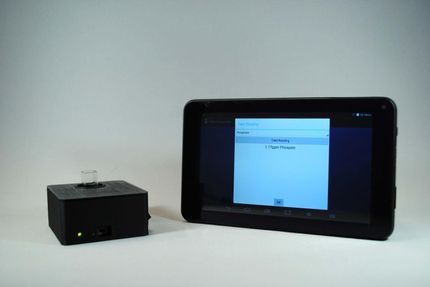Measuring nitrate concentrations in leafy green vegetables
Leafy green vegetables such as lettuce, Asian greens, and spinach can accumulate high concentrations of nitrate-nitrogen (NO3-N), which are potentially harmful if consumed by humans. To measure NO3-N concentration in plant tissue, many laboratories use ion selective electrodes (ISEs). Relatively inexpensive and portable ISE nutrient monitoring devices, including the Cardy NO3-N meter, are widely used to measure fresh plant sap NO3-N levels. Although conventional means of measuring plant tissue NO3-N are accurate and reliable, they often require sophisticated equipment and trained technicians and can be time-consuming, expensive, and impractical outside of a laboratory setting.
A team of researchers from Washington State University undertook a study to determine if rapid, less-expensive tissue processing and analysis methods can substitute for more laborious, expensive procedures to assess quality in leafy green vegetables. Scientists Kristy Ott-Borrelli, Richard Koenig, and Carol Miles recently published the results of their study that compared fresh sap expressed from whole leaves and analyzed with a Cardy meter with the analysis of dry leaf tissue extracts analyzed with a benchtop ion selective electrode and an automated colorimetric method for determining NO3-N concentration.
Ott-Borrelli explained the impetus for the study, stating; "It would be advantageous for growers to have rapid and inexpensive methods to accurately measure plant tissue NO3-N, allowing them to make fertility and harvest management decisions for these crops." Samples for the study were taken from a larger experiment in which 24 varieties of lettuce, Asian greens, and spinach were harvested three times at two locations during winter.
Results from ISE and colorimetric analysis of the same dry leaf tissue extracts had a strong relationship (r2 = 0.92). The ISE was relatively easy to operate and affordable, suggesting it is an adequate substitute for automated colorimetric analysis of dry plant tissue extracts.
However, results of fresh whole leaf sap analyzed with the Cardy meter showed a poor relationship with dry leaf tissue extracted and analyzed using the ISE (r2 = 0.25) or with colorimetric analysis (r2 = 0.21). The study found that Cardy meter analysis of sap expressed from whole leaves was not comparable to ISE or colorimetric analysis of dry leaf tissue extracts for leafy green vegetables.
According to the research report published in the ASHS journal HortTechnology, "the study suggests that the extraction and analysis of fresh leaf sap with a Cardy meter is not comparable to procedures in which dry leaf tissue is extracted and analyzed with ISE or colorimetric procedures to determine NO3-N concentrations."
Most read news
Organizations
Other news from the department science

Get the analytics and lab tech industry in your inbox
By submitting this form you agree that LUMITOS AG will send you the newsletter(s) selected above by email. Your data will not be passed on to third parties. Your data will be stored and processed in accordance with our data protection regulations. LUMITOS may contact you by email for the purpose of advertising or market and opinion surveys. You can revoke your consent at any time without giving reasons to LUMITOS AG, Ernst-Augustin-Str. 2, 12489 Berlin, Germany or by e-mail at revoke@lumitos.com with effect for the future. In addition, each email contains a link to unsubscribe from the corresponding newsletter.





















































